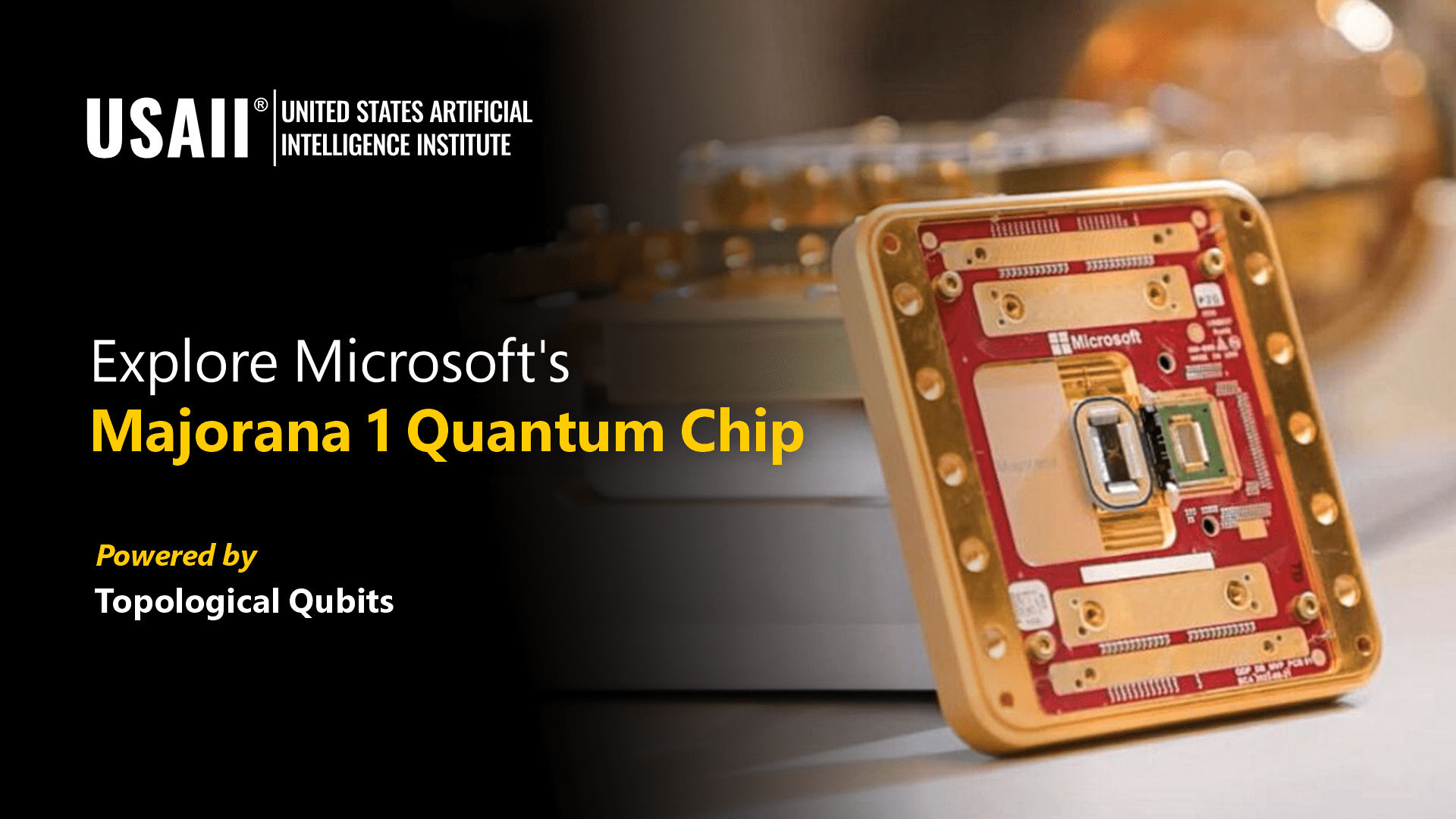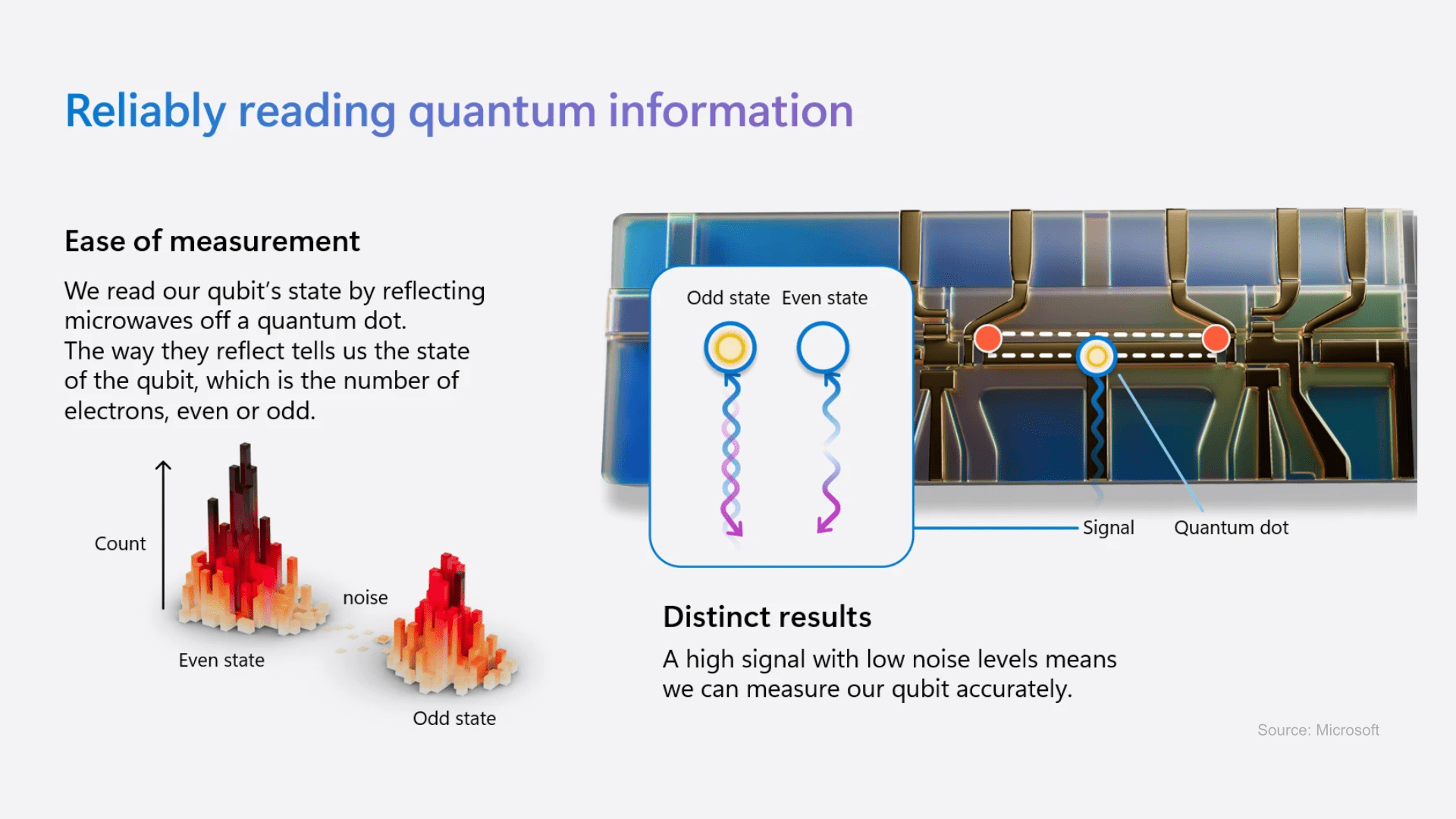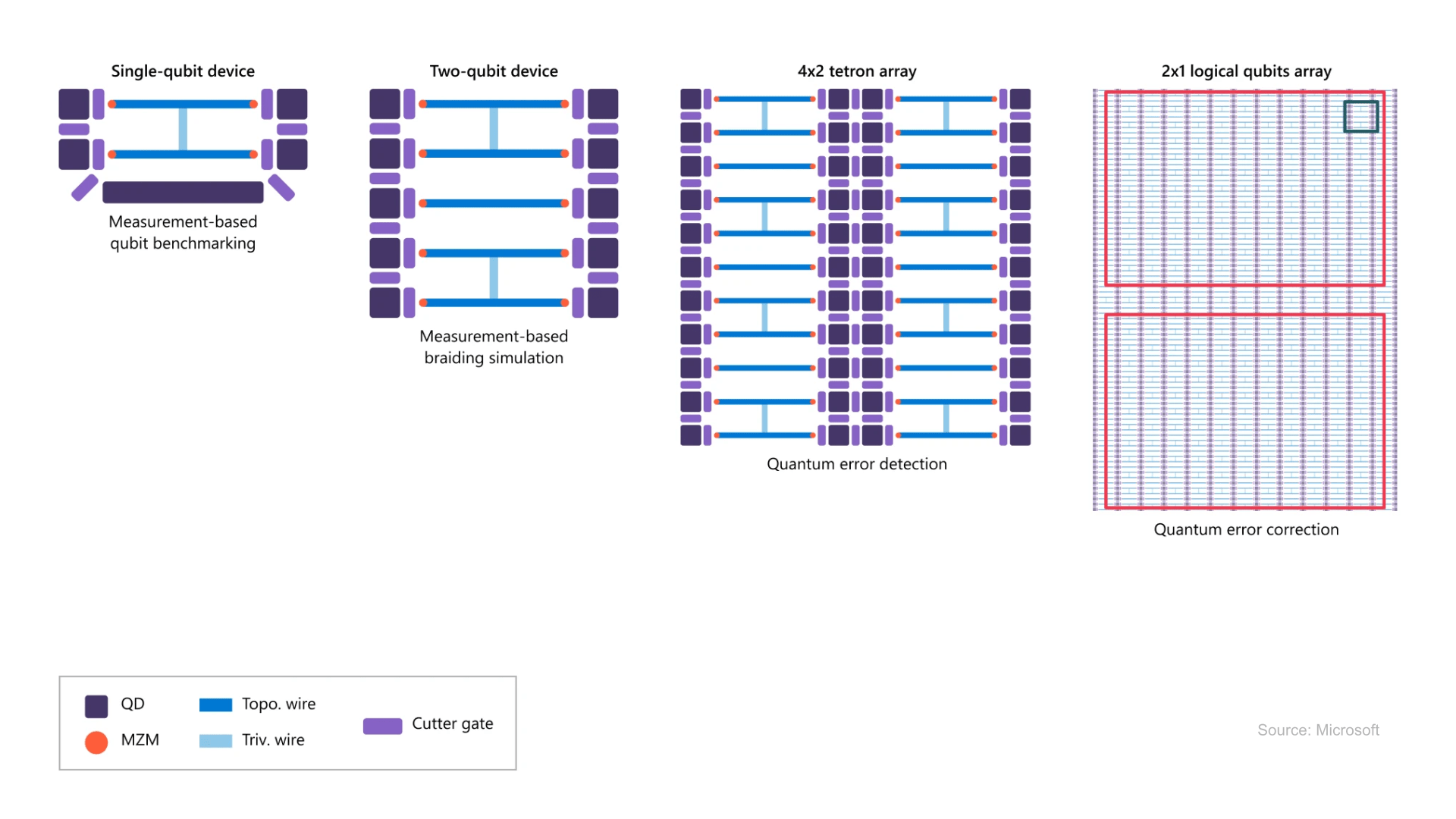
Quantum computing just took a massive step forward. Microsoft's Majorana 1 is not just another quantum chip, it is a revolution. Why? Because it uses topological qubits, a groundbreaking approach to stability and accuracy. Majorana 1 processor uses a new type of qubit called a topological qubit. These qubits are more stable and less prone to errors than regular qubits. Think of a regular qubit like a delicate snowflake. It is beautiful but easily distributed by the slightest touch or change in temperature.
Now, imagine a topological qubit as a knot in a rubber band. You can stretch or twist the rubber band, but the knot stays intact. This stability is crucial because quantum computers are very sensitive to their environment. Even tiny disturbances can cause errors in calculations. Regular qubits have error rates of about 1 in 100 to 1 in 1000. That means lots of mistakes in complex calculations. But Majorana 1’s topological qubits aim for much lower error rates. Microsoft’s goal is 1 in 10,000 in the near time, and eventually 1 in a trillion. Why is this important? Because to solve real-world problems, we need quantum computers with millions of qubits and certified AI engineers to facilitate unhindered progress.
Microsoft’s Majorana 1 chip’s design could potentially fit a million qubits on a chip the size of your palm. With millions of stable qubits, quantum computers could tackle problems like breaking down microplastics or inventing new materials. Majorana 1 is still in its early stages, with only a few qubits right now; but it represents a promising path to useful quantum computing. Microsoft believes that Majorana 1 could lead to practical quantum computers by 2027 to 2029. The future of quantum computing is on the horizon. So, do not let this era of rapid innovation catch you sleeping.
Key Takeaways by Dr. Milton Mattox (CEO, USAII®; Renowned AI Transformation Strategist; Globally Celebrated Author):
The future is not coming—it is here. Will quantum computing change everything or is it overhyped? Let us get to know Majorana 1 a little closer.
Understanding the Terminology
Will Quantum Computers Disrupt Critical Infrastructure?
Quantum computing is radically different from the ‘classical’ computing used today. Quantum systems offer the possibility of solving key problems that are beyond classical computers, in areas such as medical research and materials science, or cracking particularly complex mathematical problems. While quantum power poses risks to traditional encryption, it also opens the door to revolutionary cybersecurity advancements that could redefine how we protect data, detect threats, and secure critical infrastructure.
High Risk, High Reward- Does Google’s Willow Have a Lot to Catch Up?
Both Google's Willow and Microsoft's Majorana 1 are quantum chips that are breakthroughs in the field. Willow has more qubits than it was previously thought, and Majorana 1 has the potential to scale up to a million qubits. These chips are part of a long road toward quantum advantage; when quantum computers become commercially practical. The announcements of these chips have accelerated the move toward real-world quantum computing applications.
Majorana 1- High Points Mentioned by Microsoft
Majorana 1 simplifies Quantum Error Correction (QEC) dramatically. It performs error correction entirely through measurements activated by simple digital pulses that connect and disconnect quantum dots from nanowires. This digital control makes it practical to manage the large numbers of qubits needed for real-world applications.

Digital switches are used to couple both ends of the nanowire to a quantum dot, which is a tiny semiconductor device that can store electrical charge. This connection increases the dot’s ability to hold charge. Crucially, the exact increase depends on the parity of the nanowire. This change is measured using microwaves. The dot’s ability to hold charge determines how the microwaves reflect off the quantum dot. As a result, they return carrying an imprint of the nanowire’s quantum state
The Defense Advanced Research Projects Agency (DARPA) has now selected Microsoft as one of two companies that will advance to the final phase of its Underexplored Systems for Utility-Scale Quantum Computing (US2QC). Microsoft will now build a fault-tolerant prototype quantum computer based on topological qubits “in years, not decades.”
Scalable Architecture

One fundamental operation, measuring the parity of one of the topological nanowires in a tetron uses the basic technique. Another key operation puts the qubit in a superposition of parity states. This, too, is performed by a microwave reflectometry measurement of a quantum dot, but in a different measurement configuration in which it decouples the first quantum dot from the nanowire and connects a different dot to both nanowires at one end of the device. Performing these two orthogonal Pauli measurements, Z and X, demonstrated measurement-based control, a crucial milestone that unlocks the next steps on our roadmap. The next steps will involve a 4×2 tetron array!
Microsoft’s Quantum Promise

Understanding Quantum mechanics will be core for future tech advancements. With the DARPA agreement in place, and foundational capabilities being challenged time and over again; Microsoft’s Majorana 1 is all set to extend its wings and strengthen its commitment to relentless progress toward its goal of building a machine that can drive scientific discovery and solve problems that matter.
Follow us: